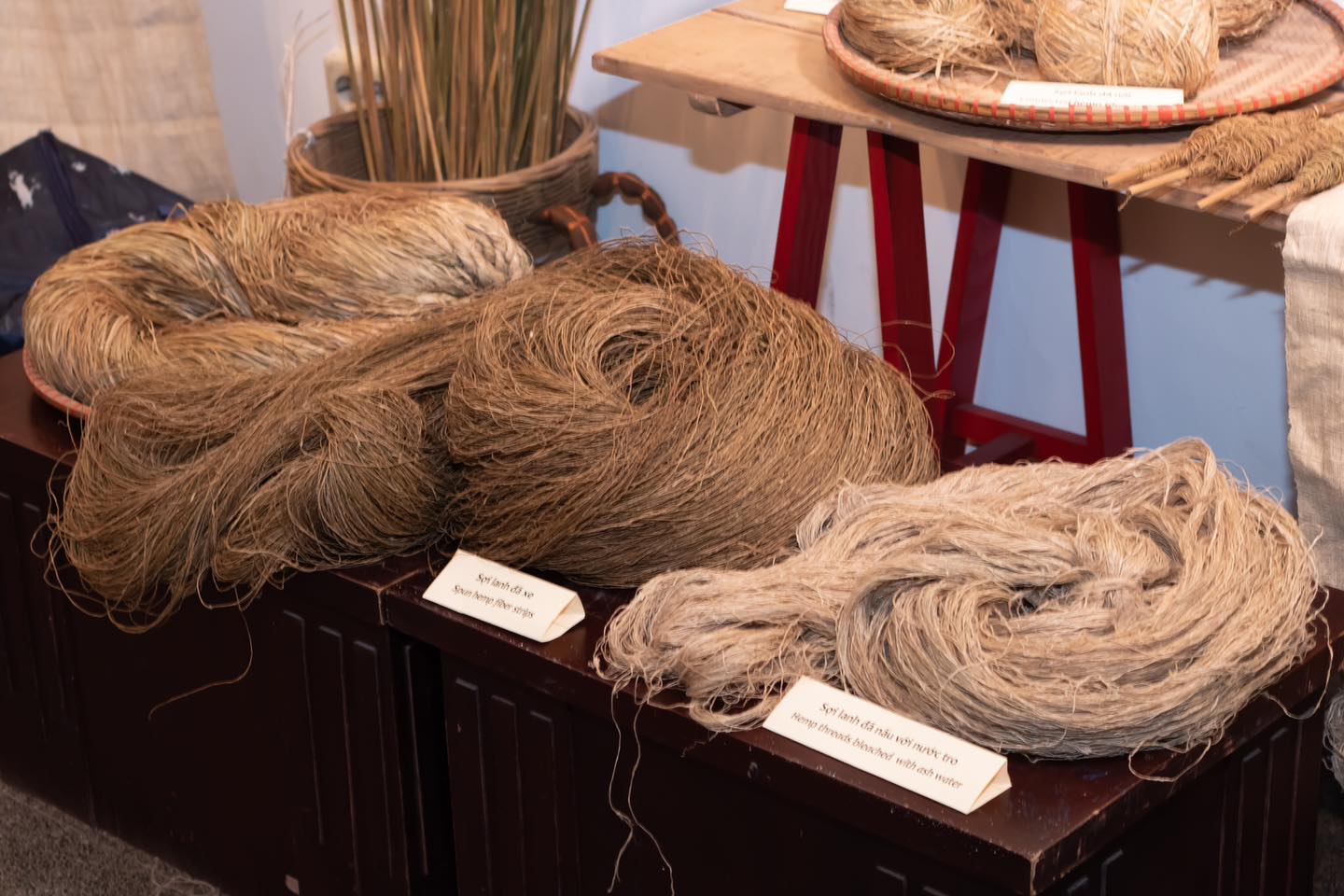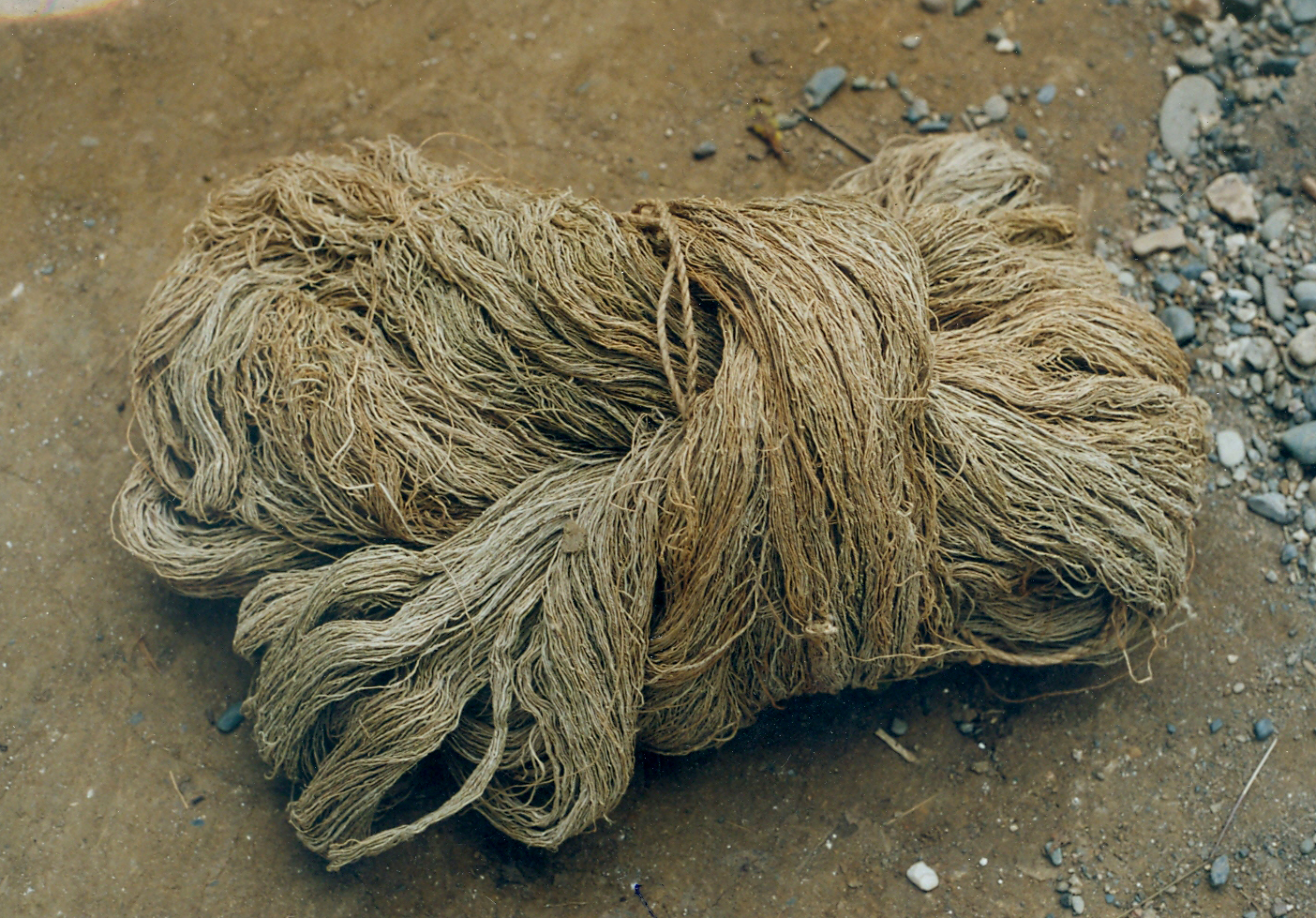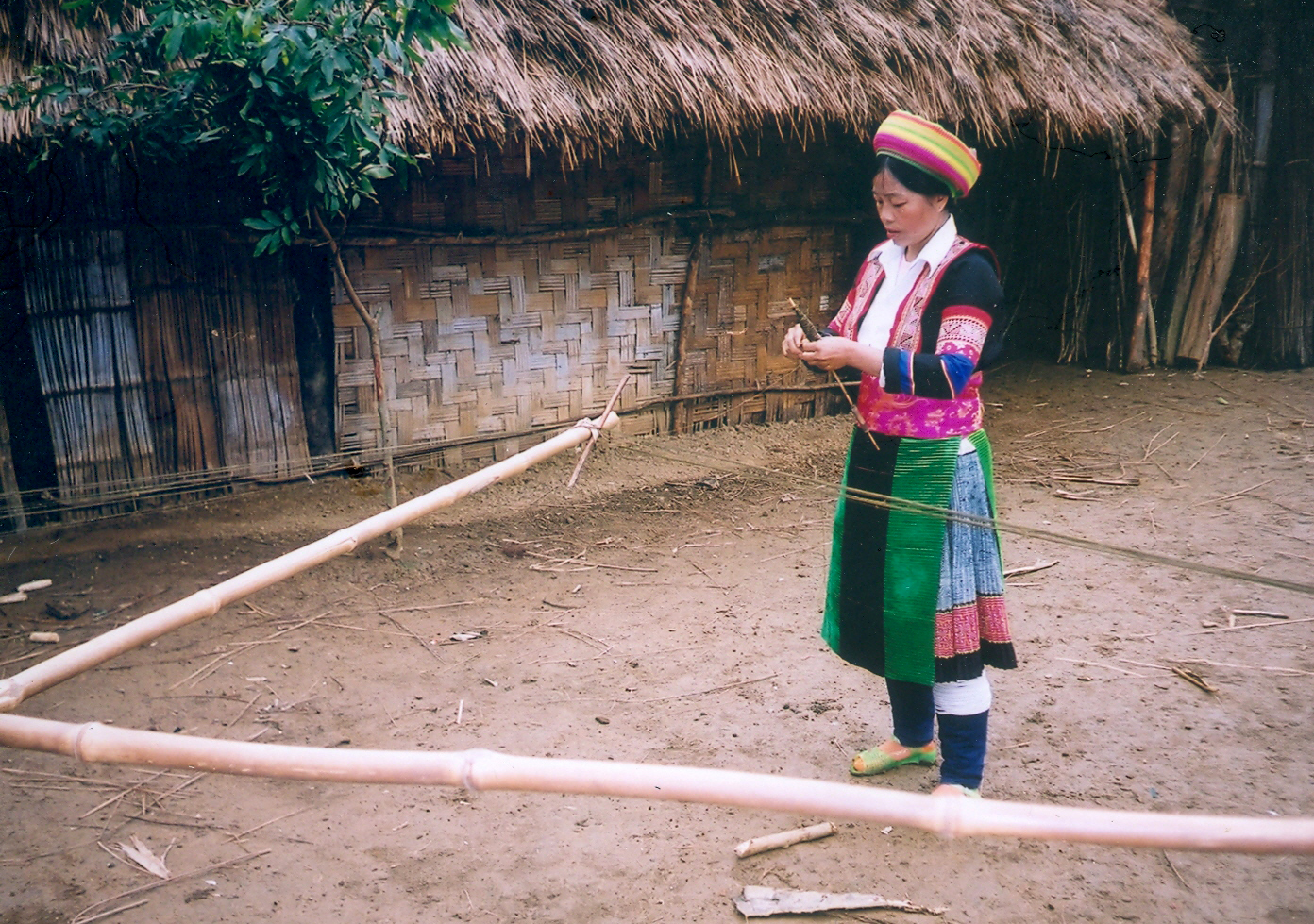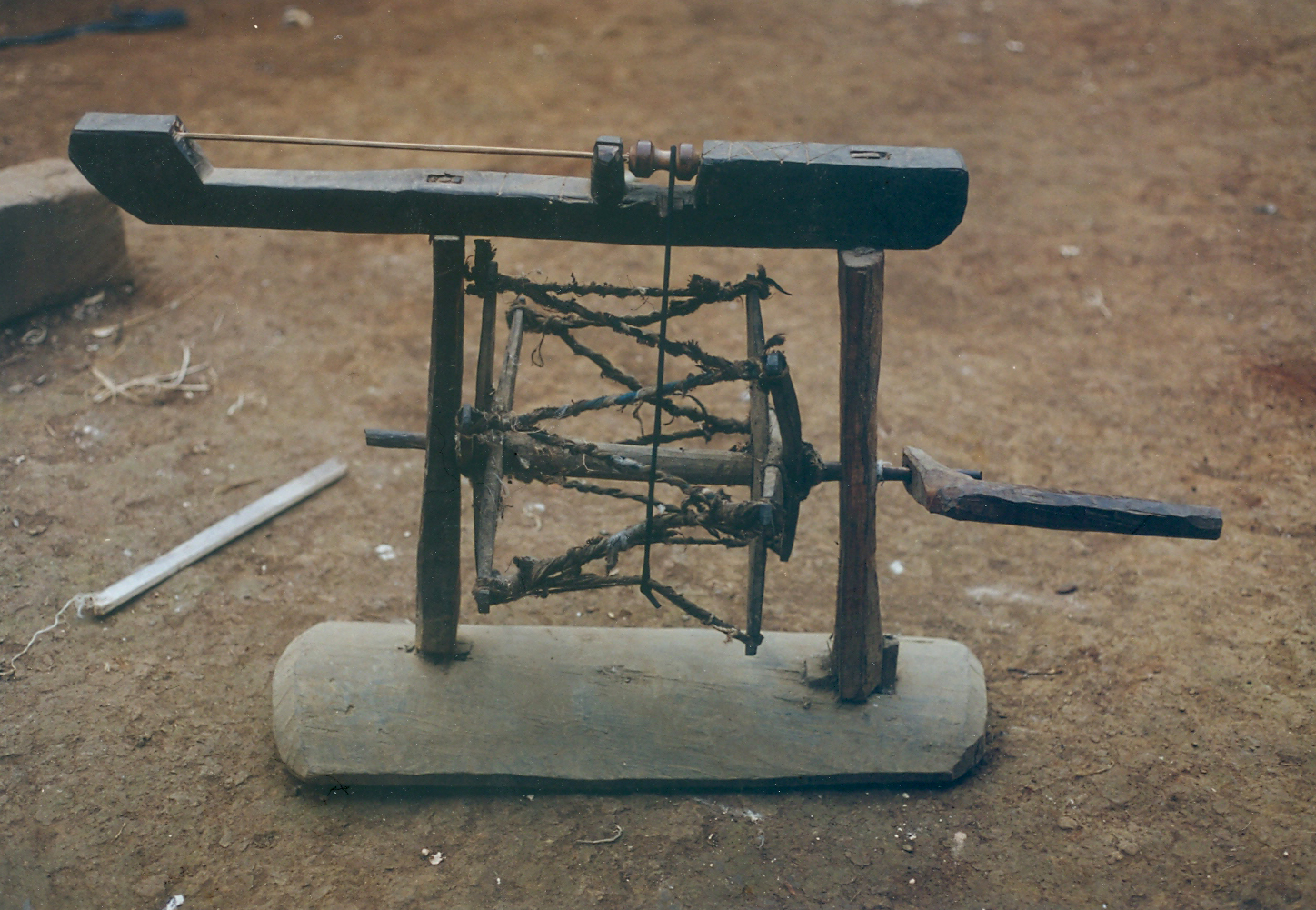The hemp project in Lung Tam Commune
Lung Tam commune is located in Quan Ba, a mountainous district in Ha Giang province bordering China. The Hmong of Lung Tam grow rice and corn on their terraced fields, and raise pigs and chickens. Winters are especially hard, and year-round they lack cash income.
Under a project for incoming generation whose partners include MRDP (Mountain Rural Development Program), Craft Link and DARD Ha Giang, a group of Hmong women are learning to make high-quality hemp cloth. They also appliqué traditional patterns, make tie-dye, and design new products. In addition, they are learning bookkeeping and management of their own handicraft enterprise.
Hemp cloth in Hmong culture
In the past, all Hmong clothes were made of hemp (Cannabis sativa L.). The Hmong are proud of their handmade clothes, and women’s pleated hemp skirts are considered especially beautiful. Finest clothes are worn for the new year festival, weddings or the weekly market. Beautiful clothing shows a woman’s good skill and hard work.
When people die, family members dress them in a hat, clothing and shoes made of hemp cloth. Deceased Hmong women are dressed in four hemp skirts. People who attend a funeral also wear hemp clothing, and children show respect to their parents by preparing hemp cloth and clothes for them long before they are deceased. Hmong people also use hemp cloth in worship, and give it as wedding gifts. A bride-to-be must wear a hemp skirt given by her mother-in-law when she comes to live in her husband’s house.
Villages in Lung Tam commune are comprised of both White Hmong and Flower Hmong households. Flower Hmong wear a pleated batiked hemp skirt with an embroidered border, while White Hmong wear a pleated white hemp skirt which has no decoration.
Growing and weaving hemp
Making hemp cloth requires about 7 months (from raising the hemp crop to weaving the cloth) and a lot of manual labor. In early May when maize is planted, a piece of fertile land is kept free for growing hemp. Hemp seeds are usually saved from the last crop. The best seeds are beaten and husked. They are sown close together, so that the hemp plants will grow straight and thin with few branches. Thin plants produce a better quality of hemp cloth.
According to one Hmong farmer, when sowing seeds, one should not respond to any passerby, or else the seed’s soul will travel away with the passerby and the plant will be unable to grow.
Two and a half months after sowing, the hemp reaches about two meters and is ready to be harvested. After harvesting, all leaves and small branches are removed, and the hemp stalk is dried in sunlight from 10 to 14 days until it is completed dry. Then it is separated into bunches according to length. Each stalk is broken at the middle and the bark peeled away from the core. One hemp plant produces 8-12 strips of fiber, and the longest strips can be about 1.6 meters. Hemp strips are tied in a bunch and pounded to remove the hard part of the bark.
Connecting hemp fiber is a long process. A hemp strip is split 10cm from one end and another strip is inserted into the split. The two ends are twisted together tightly so that the knot is not visible. Hmong women often have hemp fiber wound around their waits and hands, and use any s pare time to connect strips.
To make the fiber stronger, it is spun on a wooden spinning wheel with a 70cm diameter frame. The wheel (che tu) which is turned by pedaling, draws and twist the fiber from four balls of wet hemp onto four wooden chopsticks which serve as spools. The thread of one spool is attached to one arm of a four-armed horizontal bamboo frame (khau ly). The thread winds around the four arms as the khau ly is rotated, and then the next spool is attached. Next the thread is put in a hole in the ground with cooking ash for one night, and then boiled three times until the fiber turns white. In the final boiling, beeswax is added to make hemp smooth. The khau ly is used once more to stretch the hemp fiber and organize it into skeins.
Finally, the hemp fiber is wound onto a short bamboo stick and then a warp is strung. Traditionally the Hmong weave on a back strap loom and use only one foot to pull a single heddle. The width of the cloth is about 30 to 35cm, which is the length from a skirt waistband to the hem. When taken off the loom, hemp cloth must be washed repeatedly for one month until it becomes as white as possible. Finally, hemp cloth is pressed between a stone and a log to make the cloth smooth and flat.
Appliqué of the White Hmong
Although they wear a plain white pleated skirt, White Hmong women decorate their collar, sleeves and belt with intricate appliqué. White and red cotton cloth is usually appliquéd onto a black background. The thread used for making fine stitches is pulled from the appliquéd cloth itself, and so cannot be seen. Commonly appliquéd is a snail (ca cu) motif, a motif which has several interesting variations.Batiked decoration by the Flower Hmong
Flower Hmong women have several bamboo pens with copper nibs which they dip into melted beeswax and use to draw a variety of traditional patterns on white hemp cloth. The cloth is dyed in indigo many times before it is boiled to release the beeswax.
For more information, please click here: https://drive.google.com/drive/u/1/folders/1ccOZZnltkQc8CJ7z4ElMzouvBis2PqDm


















For more information about this project, please contact:
CRAFT LINK 51 Van Mieu Str., Hanoi, Vietnam
Tel: (8424) 3733 6101
Email: craftlink@craftlink.com.vn
Web: www.craftlink.com.vn
FB: facebook.com/craftlink.com.vn
IG: instagram.com/craftlinkvietnam





